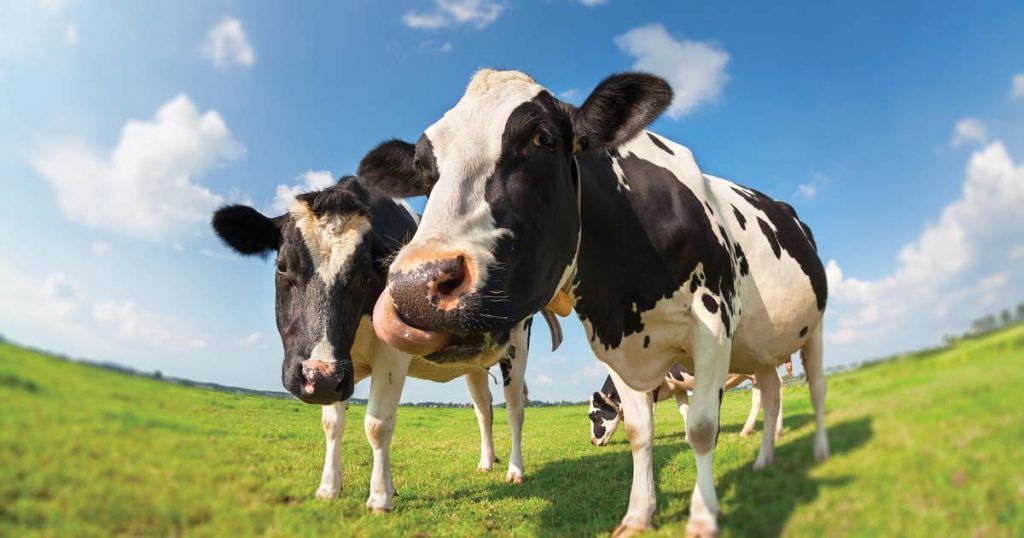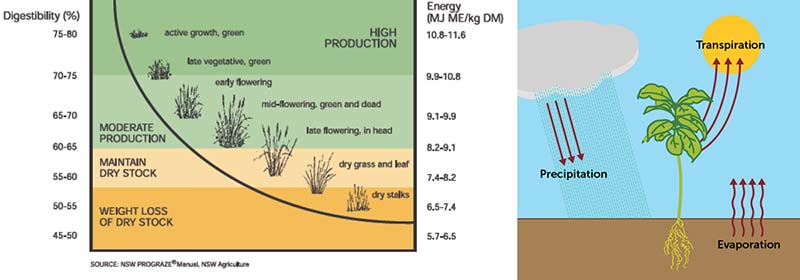Preparing for summer feeding
By the time that you read this article, summer will only be weeks away. Depending on where you live it might feel like winter has just ended but beach weather is definitely on its way. Regardless of the weather forecast, summer in Victoria is always hot and dry for a significant period.
- What are the things that you need to consider now to continue having a good season?
- How about we make a list and see how many boxes that you can tick?
Declining Pasture Quality
The pasture might look green but that does not mean it will stay that way. As plants go through their natural reproductive cycle they put all of their efforts into seed production and eating quality suffers as a result. On 18 October, this year I saw a feed test where the protein in the pasture had already fallen to 18.0%. That same pasture would have been over 28.0% four weeks earlier so a massive 2.5% drop in quality every week. It would be unusual if the pasture did not continue to decline at the same rate going forward as the pasture goes to seed. This is why you need to look at adjusting the protein percentage in the silo now.
Disappearing Pasture Availability
Temperatures rise in summer and so too does evaporation rates. Summer temperatures and rainfall varies from district to district and year to year. This does not alter the fact that unless you can irrigate, then evapotranspiration will easily exceed precipitation in summer. Evapotranspiration refers to the removal of moisture from the ground by combined plant growth and evaporation.
Perennial ryegrass pastures need 100mm of rain to produce 1.0 ton of editable dry matter so they grow very slowly over summer and autumn if at all. Summer crops (brassicas, corn, millet or sorghum) are far more efficient than this and some can produce 4.0-ton dry matter from 100mm. If you want to graze summer crops in January then you need to plant them on November.
Increasing Demand for Water in Troughs
When it is hot, all living creatures require more water. Water is the most abundant nutrient required by ruminants but we give it little thought. Perhaps if we had to pay for it, as we do for grain or fertilizer we might value it a little bit more. Ruminants need 5 litres of water per kilogram of dry matter but this can double on hot days. If the animal is thirsty and water is not available, then they will refuse to eat even when there is an abundance of food available. Obviously, any drop in appetite results in loss of production. Now is a great time to keep an eye on your water troughs to make sure that they are working and clean.
Heat Stress on Animals
What does sitting in a sauna feel like? That is how cows feel in a paddock with 40-degree heat. As a result, we see reduced feed intake resulting in less milk and weight loss. The cows’ respiration rate climbs with temperature and can reach dangerous levels, sometimes even causing death. We cannot see inside the cows, but proper rumen function breaks down during heat stress causing acidosis and scouring. That acidosis has the potential to cause white line disease in the hoof that you probably will not notice until the following winter.
Increasing Fibre in the Diet
During winter a lack of fibre results in scouring cows, low butterfat and potential health problems such as sore feet and acidosis. In summer the opposite occurs. The cows have fibre coming out of their ears, eating mature pasture and conserved hay and or silage. This results in slower rumen passage with less daily dry matter intake. The consequence of this is reduced production. In nutrition there is a concept called effective fibre based on the number of bites required to digest food. Using a fine chopper on conserved forage does some of the work for the animal reducing chewing time and as a result reducing effective fibre.
Using Stock Feed to Help with Summer Problems
Stock feed can reduce the impact of all the problems above.
- Adding protein to your silo feed can replace some of the protein lost in the pasture or lacking in your conserved forage. Once a cow has met maintenance, it takes approximately 80 grams of dietary protein to make a litre of milk. A 12.0% grain mix or pellet has 120 grams of protein so you should expect a response of one litre gained for one kilo fed. A 16.0% pellet contains 160 grams so 1.3 litres should be the result. At 50 cents per litre that is 15 cents extra milk per kilo at about 4 cents additional cost.
- If the pasture is disappearing then replacing some of it with pellets or crushed grain is a better choice than only extra conserved forage. Grain and pellets reduce the overall fibre in the diet but extra forage increases fibre. Maximum intake and maximum milk is achieved at 30-35% N.D.F. Most grain/pellet mixes are less than 20% NDF and most conserved forages are over 50% N.D.F. It is a good idea to ask your Reid Stock feeds representative to test the fibre in your forage and balance the grain accordingly.
- Heat stress and water demand are interrelated. If you are confident the cows are drinking enough water that is great, but they can still suffer from heat stress. Studies suggest that it costs between 2.0-4.0 litres per cow every day in summer because of heat stress. One of the things that you can do to mitigate this is to add a substance called betaine to your stock feed in summer. Betaine costs 15 cents per cow per day but at 50 cents per litre, it is a cheap way to maintain milk production. A good thing about Betaine is that you can see that it is working because the cows do not pant as much on hot days.
Source : NSW ProGraze Manual NSW Agriculture

